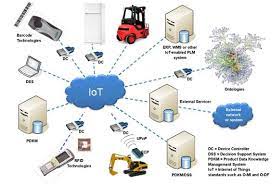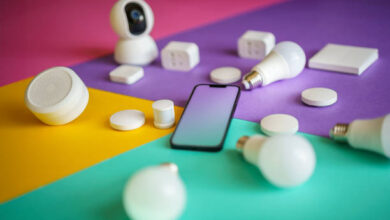how IoT is used in Standards and Interoperability(2024 Guide)
IoT and Standards: Ensuring Interoperability for a Connected World

IoT and Standards: Ensuring Interoperability for a Connected World
how IoT is used in Standards and Interoperability: The Internet of Things (IoT) is a dynamic ecosystem of devices, sensors, and systems that communicate and collaborate to deliver a wide array of applications and services.

To ensure the smooth functioning of this complex and diverse environment, standards and interoperability play a pivotal role. In this article, we’ll explore how IoT is used to establish standards and interoperability, fostering a more connected and efficient world. EnoughInfo.net
The Importance of Standards in IoT
IoT devices and systems come from various manufacturers and are designed for different purposes. Without standards, this diversity can lead to fragmentation, making it difficult for devices to communicate and work together. Establishing common standards is essential for the following reasons.
1. Interoperability
Standards ensure that IoT devices and systems can communicate and work seamlessly with each other. This interoperability is crucial for the success of IoT, as it allows for a more interconnected and efficient ecosystem.
2. Security
IoT standards often include security protocols and guidelines. These standards help protect devices and data from cyber threats, ensuring that IoT systems are as secure as possible.
3. Regulatory Compliance
Regulatory bodies often require compliance with specific standards to ensure the safety and privacy of IoT users. Adhering to standards helps organizations meet legal requirements and avoid potential liabilities.
4. Scalability
Standards help IoT systems scale more easily. As new devices are added to the ecosystem, they can seamlessly integrate with existing systems, thanks to established protocols.
IoT Standards Organizations
Several organizations are instrumental in developing and maintaining IoT standards. Some of the key players in this space include: How IoT is used in Energy Management:(2024 Guide)
1. The Internet Engineering Task Force (IETF): IETF focuses on developing Internet standards, including those that pertain to IoT. They work on protocols like CoAP (Constrained Application Protocol) and 6LoWPAN (IPv6 over Low Power Wireless Personal Area Networks).
2. The Institute of Electrical and Electronics Engineers (IEEE): IEEE has several working groups dedicated to IoT standards, covering areas such as IoT architecture, IoT security, and communication protocols.
3. The International Electrotechnical Commission (IEC): IEC is responsible for international standards in the electrotechnical field, including standards for IoT devices and systems.
4. The Internet of Things Consortium (IoTC): This industry association is focused on shaping the future of the IoT. It works on creating standards and best practices for IoT development.
IoT Interoperability
Interoperability is the ability of different devices, systems, or applications to work together and exchange data. In the context of IoT, interoperability is a central challenge. Achieving interoperability requires a combination of standardization and effective implementation: how IoT is used in transport and logistics:(2024)
1. Common Protocols: Establishing common communication protocols, such as MQTT (Message Queuing Telemetry Transport) or HTTP, ensures that IoT devices can transmit data and commands to each other and to central systems.
2. Open APIs: Open Application Programming Interfaces (APIs) allow developers to access and integrate with IoT devices and systems, making it easier to develop cross-platform applications.
3. Data Formats: Standardizing data formats and structures ensures that data from different devices can be easily interpreted and processed by various systems. How To Protect IoT Devices From Hackers(All You Need To Know)
4. Testing and Certification: Implementing testing and certification programs can verify that IoT devices conform to established standards and are capable of interoperating effectively.
Challenges and Future Trends
While IoT standards and interoperability have come a long way, challenges remain:
- Rapid Technological Evolution: IoT is a rapidly evolving field, and standards must adapt to keep pace with new technologies and devices.
- Fragmentation: Despite standardization efforts, the IoT landscape remains fragmented, with various standards for different applications and industries.
- Security: Ensuring that interoperable devices are also secure is a continuous challenge. As IoT expands, so do the potential security risks. How To Build AI-Driven Marketing Automation Systems
- Privacy Concerns: IoT devices often collect sensitive data. Privacy standards and regulations must continue to evolve to protect users’ information.
In conclusion,
standards and interoperability are fundamental to the success of IoT. They ensure that devices and systems can work together seamlessly, making IoT more accessible, efficient, and secure. As IoT continues to grow, standards organizations, developers, and policymakers must collaborate to establish a robust and evolving framework for the IoT ecosystem. This will pave the way for a connected world where IoT seamlessly enhances our daily lives. How To Build AI-Driven Marketing Automation Systems








